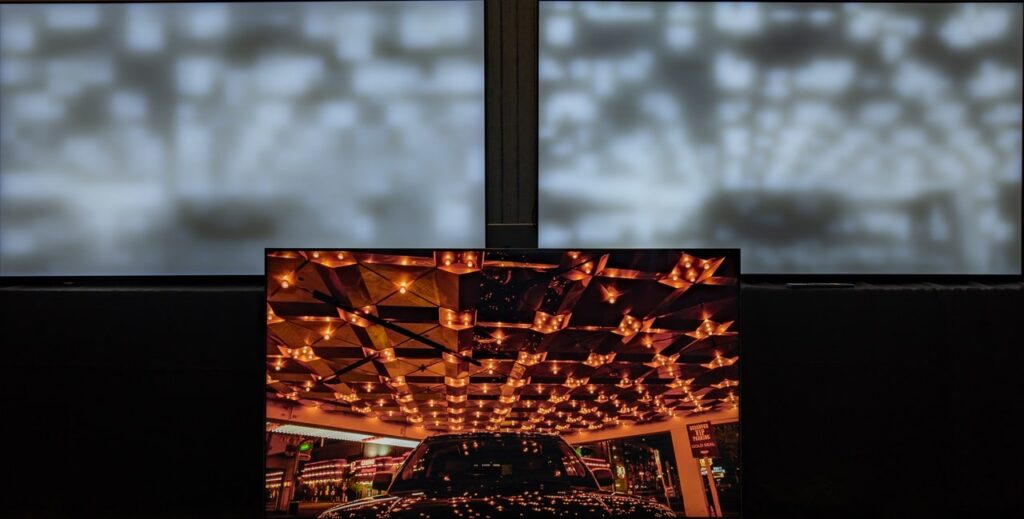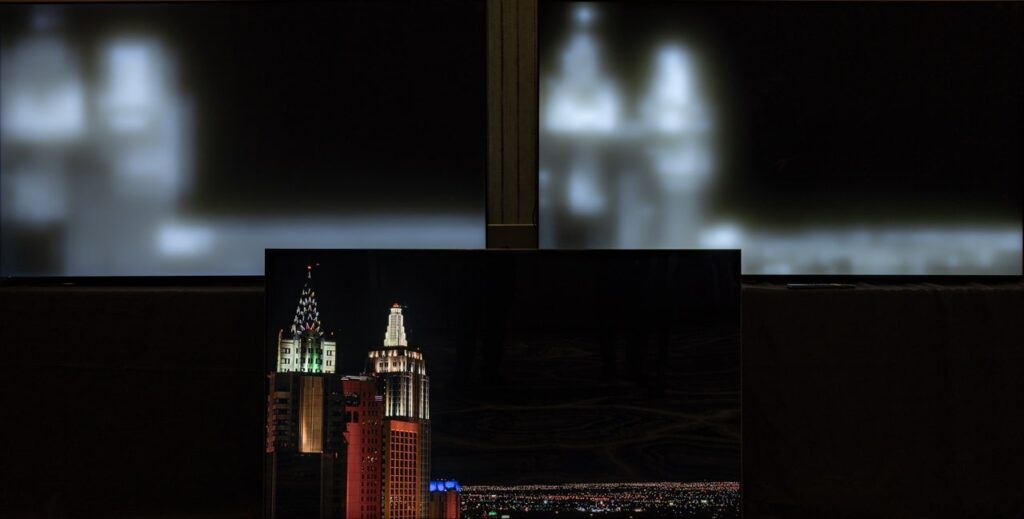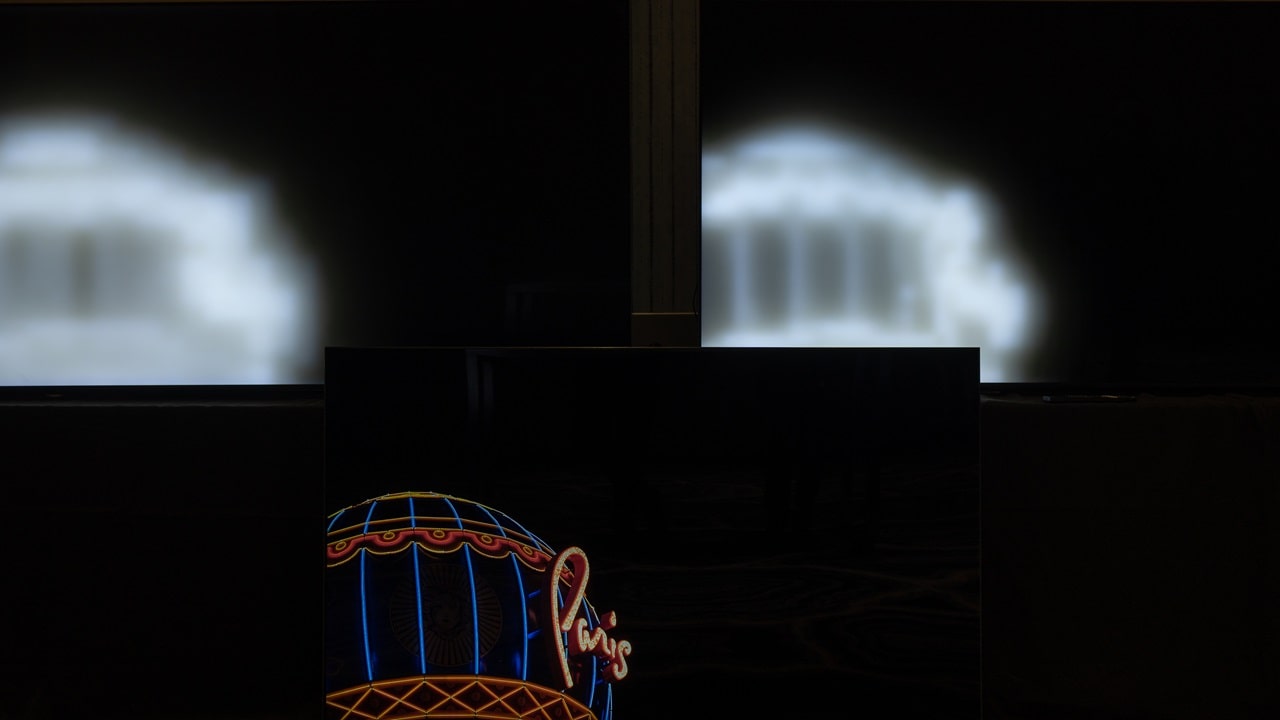Arthur C. Clarke said that “any sufficiently advanced technology is indistinguishable from magic”. But the difference between the two is that you have to believe in magic, while the technology can be explained. And CES 2024 in Las Vegas is the perfect place to understand what’s behind the technological products we use every day – as we saw when Sony has (literally) cut a MiniLED display on one of its TVs in half to show us how it works. And to make us understand the technologies and philosophies behind his screens.
Sony at CES 2024 brings us its MiniLED technology
In a dedicated suite at the Mirage hotel in Las Vegas, Sony lifted the veil on some of its most interesting panel technologies in the company’s TVs, while also giving us a preview of how Sony TVs will evolve this year. But the Japanese company’s team starts by telling us that, at least in part, what differentiates its MiniLED TVs from the competition is a philosophical choice.
Getting closer to creative intent
To do this, Sony engineers showed us the comparison between the images of the current Sony X95K and its rival with similar technology (at least on paper). Putting the two TVs side by side against a Sony professional reference monitor, the type of screen that directors and cinematographers use when working on a film – we are talking about displays costing several tens of thousands of euros. The goal is to understand which of the two TVs is closest to the monitor on which professionals make their creative choices: whoever comes closest to the creative intent.

The difference is evident in a film like the classic Minority Report, with its interior scenes that have strong white lights and bold contrasts. Sony chooses to get as close as possible to the light and dark of the reference monitor, while its rival tries to match its brightness. The result is that in the images of Sony TVs we see less “blooming”: the effect whereby the light from the bright points shines even in areas that should be dark.
The right balance
Sony then compared the images of its top of the range also with an OLED display, which has perfect blacks because you can control every single pixel. But in images with different shades of black, the OLED struggles to pick up, resulting in images that look less “alive”.
It seems to us that in both tests the Sony team chose images that underline the limits of the rivals: in other contexts the differences would be less marked. But this test helped us understand the differences in philosophy: some MiniLED panels prefer strong brightness for brighter colors, OLEDs focus on contrast and in some situations this can “flatten” the images. But there are some differences that do not depend on philosophy, but on technology.
All the components of a winning Local Dimming
In MiniLED displays, tiny LEDs illuminate an LCD screen from behind. To improve image quality, eliminating the blooming effect we talked about, while still having shades in the dark areas, TV manufacturers work on Local Dimming. This is a technology that allows you to lower or raise the light of individual areas of the screen, in order to have the right amount of light illuminating the LCD screen.
To make us appreciate how the MiniLED displays it will present during 2024, at CES in Las Vegas Sony removed some “layers” of its displays to show us how it is working on this technology. The first step, as you have already seen in the images of this article, is playing with the settings to directly show the backlighting.

In comparisons, you can see how in the images on the right we have fewer bright halos that go beyond where the display should be black. This is because the control of the LEDs that illuminate the LCD screen improves in this new generation.
Below the screen
To show us even more clearly how this process works, Sony showed us two TVs (one from its own and one from its main rival) with half the display without the LCD screen. We could then see the singles Blue LEDs that illuminate the images. And at first glance, we could see that the rival TV had more: theoretically a technological advantage.
But when we started watching 4K footage on the two TVs, we immediately saw the difference. Despite the high number of LEDs, they could only see figures on their rivals’ displays when there was high contrast: in that case the LEDs turned off. Instead, on the Sony display we could recognize subjects even in bright scenes, because the LEDs became more or less bright, making profiles distinguishable.
Sony explained to us that this is possible thanks to the tiny drivers that regulate the MiniLEDs, which are as big as sesame seeds. But they work at 22bit: 12 regulate the same number of brightness levels, while 10 manage the switch-on times. This allows greater control of the LEDs: it’s not just a matter of managing turning them on and off, or at most a couple of things in between.
In addition to improving image quality, these technologies they also increase efficiency by 30%. In fact, to obtain the same brightness the processor of Sony TVs can decide to increase the switching on time of the LEDs instead of increasing their brightness, obtaining the same effect for less energy.
I MiniLED Sony al CES 2024
Sony’s demonstration allowed us to better understand the differences between different MiniLED TVs and different technologies. Personal taste will continue to be the determining factor: there are those who are willing to give up excellent contrast for greater brightness, or vice versa. But Sony’s work in controlling the backlighting, which is added to the algorithms that regulate the color and rendering of images on the LCD display, seems to make a difference – at least during the test seen in Las Vegas.
To fully evaluate the Sony MiniLED TVs coming in 2024, we should definitely give them a try. But having seen them without the LCD screen intrigued us: we can’t wait to understand how this technological innovation will improve image quality.















Leave a Reply
View Comments